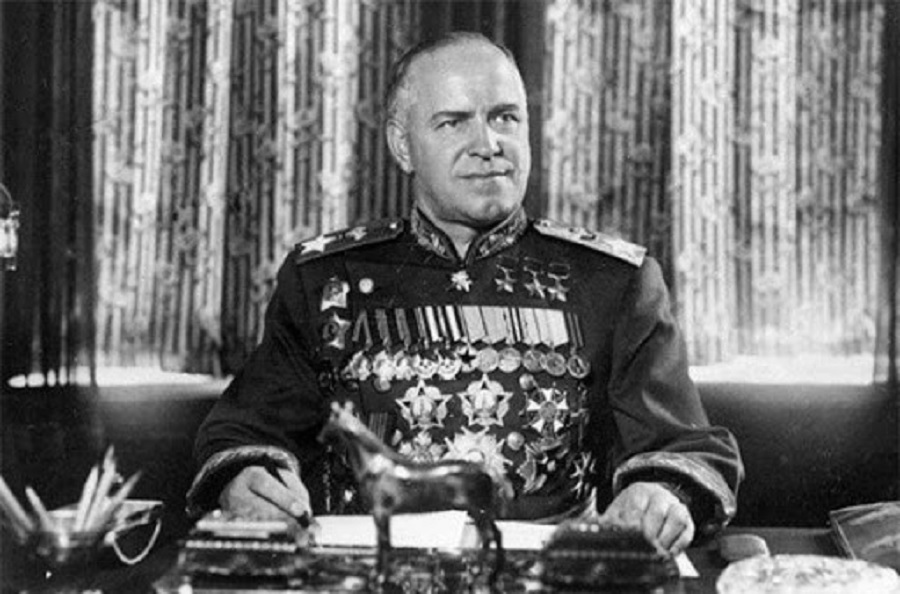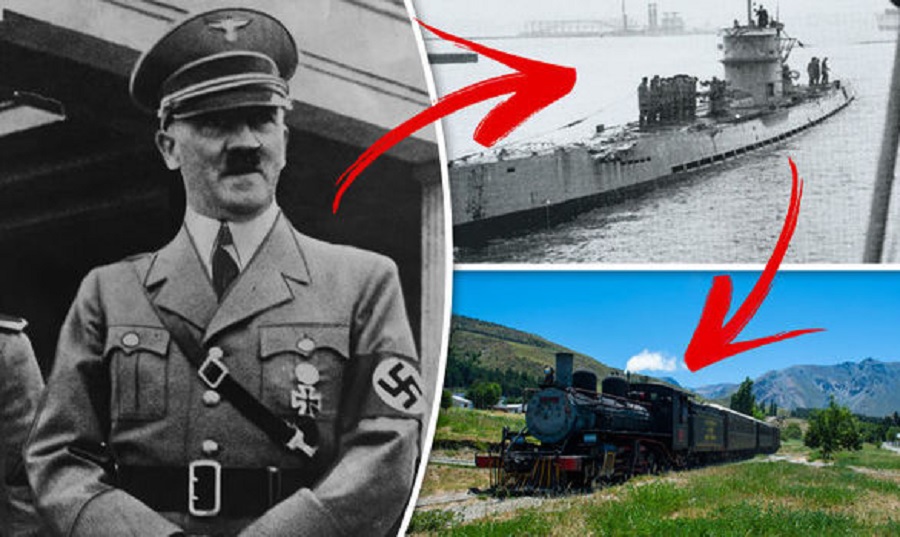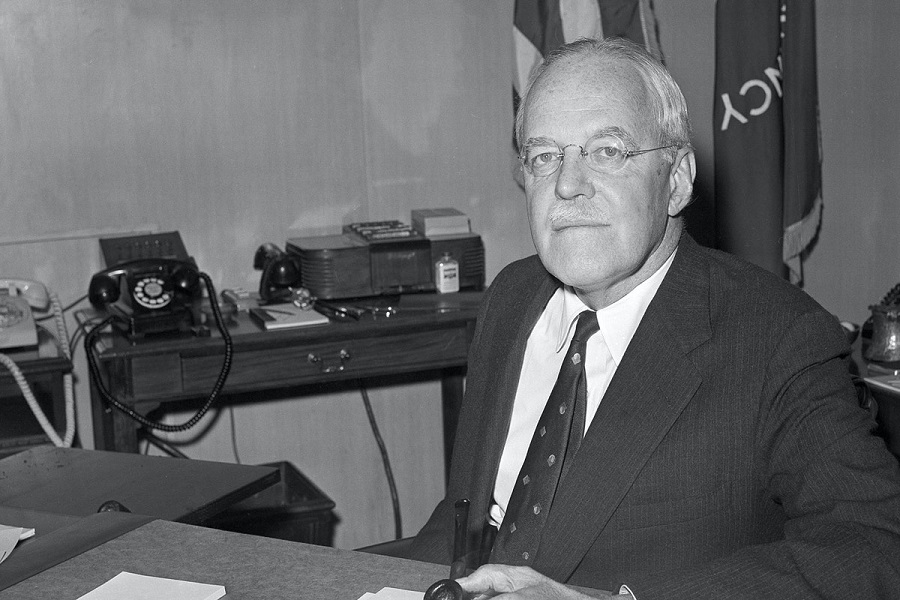By Matias Bauso
RIO DE JANEIRO, BRAZIL – In 1969, Albert Panka turned 80 years old. He was a German miner who had been retired for several years. A sullen and reserved man who had been arrested about three hundred times in the last 25 years.
He was not a criminal, nor did he have a problem with alcohol. His problem was one of physiognomy. His resemblance to Hitler was so striking that someone denounced him every time he appeared in public, and he was arrested and interrogated by the authorities. When he turned 80, he publicly asked to be left alone and to be allowed to live his old age in peace.

What Panka suffered was not only due to a tight mustache or hair falling on his forehead. It was due to the vocation of a good part of the population to believe that Hitler escaped from the bunker, that he never committed suicide, but rather escaped to some distant destination where he grew old hidden, in peace, and unpunished.
Most of those who are convinced of the Führer’s escape place his serene final years in southern Argentina.
It is difficult to know exactly who is the one who sets a conspiracy theory in motion, who is the first one to make known a plausible but false version of a historical event. However, in the case of Hitler’s death, it is known exactly who was its initiator: Joseph Stalin.
The Soviets learned of Hitler’s death the day after his suicide. The Chief of Staff of the German Army Hans Krebs went with a peace proposal to the Soviets and informed them of the Führer’s suicide. The meeting failed because the Soviets demanded unconditional surrender (they were in a position to do so, and it was agreed among the Allies). Krebs, who had always been loyal to his boss, committed suicide that same afternoon.
The highest Soviet authority in Berlin, General Georgy Zhukov, ordered the news of Hitler’s death to be put on the front page of the Red Star, the newspaper of his troops; he wanted his soldiers to know as soon as possible about his achievements, to reward them with the news. Karl Dönitz also communicated it to the German people by radio.
But three weeks later, Stalin told an American envoy that Hitler had escaped. The information of the destination exceeded its geographical vagueness. Stalin said he was in Spain or Argentina. Meanwhile, Zhukov in Germany began to repeat the same version.

It is supposed that Stalin’s motivation was to sow uncertainty, so that the other victorious nations would lack the certainties he already had. In passing, he was making his great enemy look like a coward, like someone who, faced with danger, faced with the possibility of falling into enemy hands, preferred to escape rather than resist to the end as he had asked his people to do.
But also, if Hitler was alive, there was always the possibility of a return. Therefore there was no room for contemplation or soft measures. The shadow of the escaped Hitler allowed Stalin to convince others to apply harsh sanctions, be inflexible with Germany and the remnants of Nazism.
The British became concerned and sent a secret service agent and historian, Hugh Trevor-Roper, to reconstruct the facts and obtain as much testimony and evidence as possible. Trevor-Roper produced a report that determined Hitler’s suicide, which was published as a book shortly afterward (Hitler’s Last Days) and was a great success.
However, the English historian could not rely on the testimony of Hitler’s closest collaborators in the last days of the Bunker, because they were in the hands of the Soviets. However, when these reports and statements were declassified, they agreed with the conclusions of the Englishman.
What is certain is that Stalin’s strategy was effective. He acted firmly against Germany and the former Nazi hierarchs. But he also generated confusion in the other victorious forces.
An FBI report in the months following the Nazi surrender listed the multiple destinations where Hitler was said to have been seen alive. The report listed possibilities as varied as they were contradictory. Rumors had reached the agency that he had been killed in the bunker; he had escaped from Berlin by air or Germany in a submarine.

Others claimed that he was living on an island far from the Baltic, in a fortress in the Rhineland, in a Spanish monastery, or in a South American camp.
They even claimed to have seen him living among criminals in Albania. A Swiss journalist declared that Hitler and Eva Braun resided in Bavaria. And even the Soviet news agency sent a cable stating that Hitler was found in Dublin in cross-dressing.
Other destinations where he was said to have been seen in those first post-war months: an Austrian café, a congregation of Tibetan monks, Saudi Arabia, or a secret prison in the Urals at the disposal of the Soviets.
But over the years, the version that gained more strength and almost monopolized the conspiracy theories was that Hitler managed to escape from the bunker and the Red Army siege and, together with Eva Braun, reached Argentina. How did he manage to escape? It is not clear. What was his first destination? It is not clear either.
Some say that a helicopter took him to Austria, from there a plane took him to Barcelona, where he was able to board the submarine that crossed the Atlantic to deposit him in Patagonia. Others suppose a land crossing to Spain and the submarine. These versions do not delve into how he could cross half of Europe in those critical months of 1945.
Argentina was the ideal destination to find a residence (real or fictitious) for the Führer. A distant land of great expanse and a more-than-kind recipient of Nazis. But in this case, Hitler would not have arrived like the rest of the Nazi criminals through the Rat Route but by submarine.
Despite the intriguing and interesting nature of this type of narrative, history with its cold facts always prevails and ends up destroying more entertaining versions. Two German submarines indeed arrived in Argentina after the war (the U-530 and U-977). They did so in order not to have to surrender to British forces.

But in none of them did any of the leaders arrive. Those who support this alternative version speak of a fleet of three U-boats that disappeared in April 1945. But the truth is not that the ships vanished but that the Allied fleet sank them: the U-1235 was hit on April 15 by enemy torpedoes, the U-880 was sunk on April 16, one day later, by an American destroyer, and on April 22, the same happened with the U-518.
That is to say, the three submarines did not disappear to serve as private ferries for the Führer but because the Allies destroyed them. Another issue with the U-boat theory is its departure from Barcelona: if it did, it would have had to cross Gibraltar and elude the British, a feat that seems unlikely.
Historian Richard Evans has recently published a book that analyzes several myths and conspiracy theories surrounding Nazism. It is called “The Hitler Conspiracies”, and in its last chapter (the longest of all), he analyzes the versions about Hitler’s escape and demolishes them one by one with patience and precision.
Evans, who in addition to his solid works on Nazism had already dealt in previous texts with Holocaust deniers and revisionists, shows how, although versions about Hitler and his life in Argentina have been woven since the end of the war, it is in the 21st century, when more works have been produced on the subject, that these rumors or alternative versions find a greater echo.
The modern world is a fertile place for conspiracy theories. The more popular and distant the event, the more plausible any assumption tells a parallel version of the story. Part of the public is willing to defend tooth and nail the alternative version of major political events, deaths, and moon landings. Possibly one of the areas in which they are most easily reproduced is everything related to the Third Reich.

Despite the passage of time, the subject generates ever-renewed interest, but the real revelations are increasingly scarce.
The arguments put forward by those who deny Hitler’s suicide in the bunker are similar and work on the same loopholes. Eisenhower and Stalin at some point expressed their doubts, nobody witnessed the suicide, there were FBI reports with multiple versions, there were large tracts of land in Patagonia that were owned by Nazis, Argentina hosted many Nazis, some witnesses saw the old Hitler resting in Argentina.
The most widespread alternative versions tell in broad strokes this route: Hitler and Eva Braun escaped from the bunker under the Soviet bombs, in some vague way they arrived in Spain and boarded a submarine that deposited them in Patagonia, where they lived quietly and happily without being disturbed by anyone but without staying still, because they traveled through various parts of the continent, from Mar del Plata to Colombia. Some theories even claim that the couple had two daughters, one of whom they suspect could be Angela Merkel.
Until a few decades ago, Hitler’s escape and establishment had much to do with Martin Bormann’s actions. But Bormann’s influence has faded since it became clear that he never left Berlin and that he died in May 1945. Bormann serves as an example for yet another aspect. The Nazi hunters, led by Simon Wiesenthal, searched for him in Argentina until the early 1970s without being convinced of his death.
Most of the Nazi hierarchs who managed to escape were pursued relentlessly, tracked in every corner of the world, and several of them were found. However, neither Wiesenthal nor the Klasfeld couple nor any other organization that pursued escaped Nazis ever seriously searched for Hitler, neither in Argentina nor anywhere else.

There are several who claim to have seen the couple Hitler and Eva Braun. But most of those who cite these witnesses do so, withholding their identity or revealing their testimony only after they are dead. No one provided actual proof of any of these claims (one even used a photo that was actually a modified and aged image of Bruno Ganz from The Fall, the film depicting Hitler’s final days).
The other attack made by those who hold these alternative versions is to attempt the generic discrediting of more serious historiographical research. They attack what they call “official history”. However, the serious historians who studied Nazism agree on the circumstances of Hitler’s death.
They base themselves on the testimony of the other inhabitants of the bunker, on their expressions of the previous days to the other Nazi hierarchs, on the testament dictated to his secretary, on the archives that the Russians declassified after the fall of communism that show that Stalin wanted to sow uncertainty in his associates, and on the forensic study carried out by French specialists of Hitler’s dental arcade that were found in the place.
The skull is another story. According to DNA, the skull fragment that the Soviets said was Hitler’s actually belonged to a woman.
One of the weak points of those who claim that Hitler escaped is the state of health of the Führer at that time. Witnesses unanimously speak of an obvious decline and clear signs of rapidly advancing Parkinson’s disease. It is difficult to imagine a long and healthy survival of this already alienated, sick, and fragile being. The answer to the alternative version is that in reality, it was not Hitler who suffered the tremors and the bad condition, but his double.

The strange thing is that none of his closest collaborators, those who were willing to give their lives and accompany him to the end -even those who killed their children before committing suicide themselves, such as the Goebbels couple- noticed it.
It does not matter who helped Hitler. Some argue that Allan Dulles, the former CIA director, was the one who asked Perón to shelter him. Others blamed Odessa and his omnipresence. No one finds it strange that so many people knew a secret of these dimensions and all kept silent.
Equally strange is that none of the many Nazi criminals who lived in Argentina had contacted him or talked about Hitler’s stay in Argentina. The plan to house him did involve not only Perón’s acquaintance but also many other people. The supposed daughters never appeared again.
Many of those who publish these works, which generate obvious interest and usually have an interesting repercussion, have in their backgrounds denialist works or are specialists in conspiracy theories. Evans argues that this “pseudo-history offers a perverse entertainment where nothing is what it seems, and convinces the reader that mainstream history scholars have been hiding terrible secrets for decades.”
Evans, in his book, states that the Argentinean Ariel Basti’s texts lack documentary evidence, that the testimonies are second-hand, and that the witnesses do not provide accurate evidence, only sayings that are almost impossible to corroborate.
Those who elaborate conspiracy theories seek to undermine academic and methodological studies. Thanks to an ingenious and attractive narrative, they enter into areas where they make their audience doubt, eager to distrust (often rightly so). “If we damage the credibility of properly researched works, we can substitute myths for reality. And if serious historians are wrong about Hitler’s death, they can be wrong about everything else, including the Holocaust and its aftermath,” says Evans.

Books, movies, series, and news reports spread these alternative histories that often don’t have to bother to provide proof or even strain the logical arguments, because they count in advance on the reader’s willingness, on a prior willingness to believe.
And depending on that prior bias, the recipient may believe that Hitler was a traitor and a coward who put a double in his place, who made a whole nation die for him, who escaped to a safe and comfortable destination (if Argentina was one) while the others suffered. Or someone of extraordinary skill, who escaped despite everything, managed to fool the major powers, who failed to be defeated.
In most versions, this is the underlying line: Hitler’s survival would mark his superiority, the ability not to surrender to the enemy, to continue to deceive him, as a victory, a kind of post mortem vindication in which Hitler would have made a mockery of his enemies, of justice and death. As if he could rewrite history.
Source: Infobae

